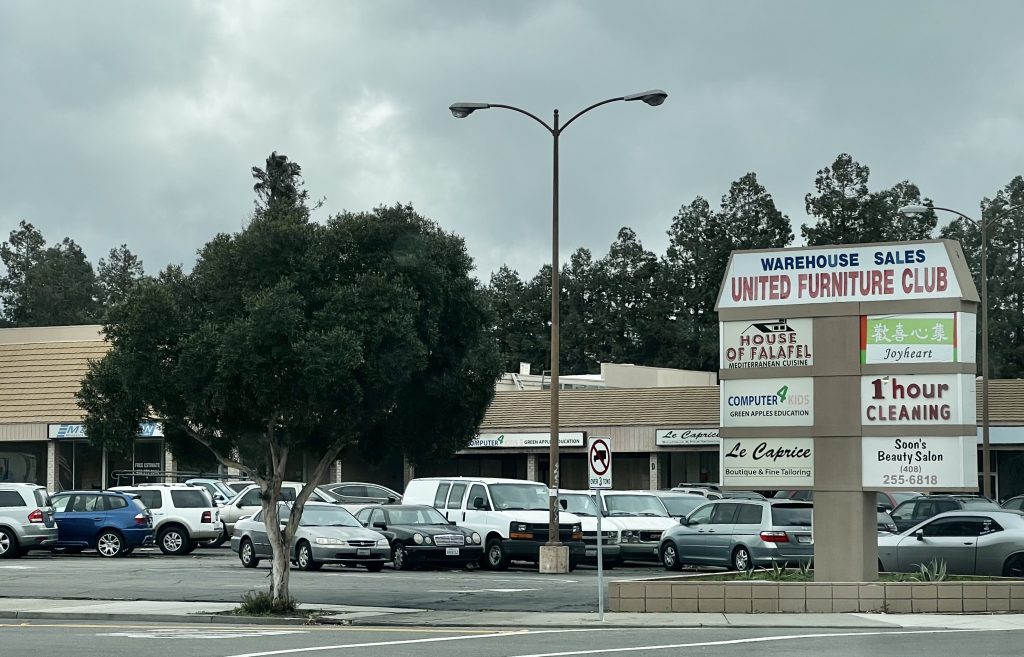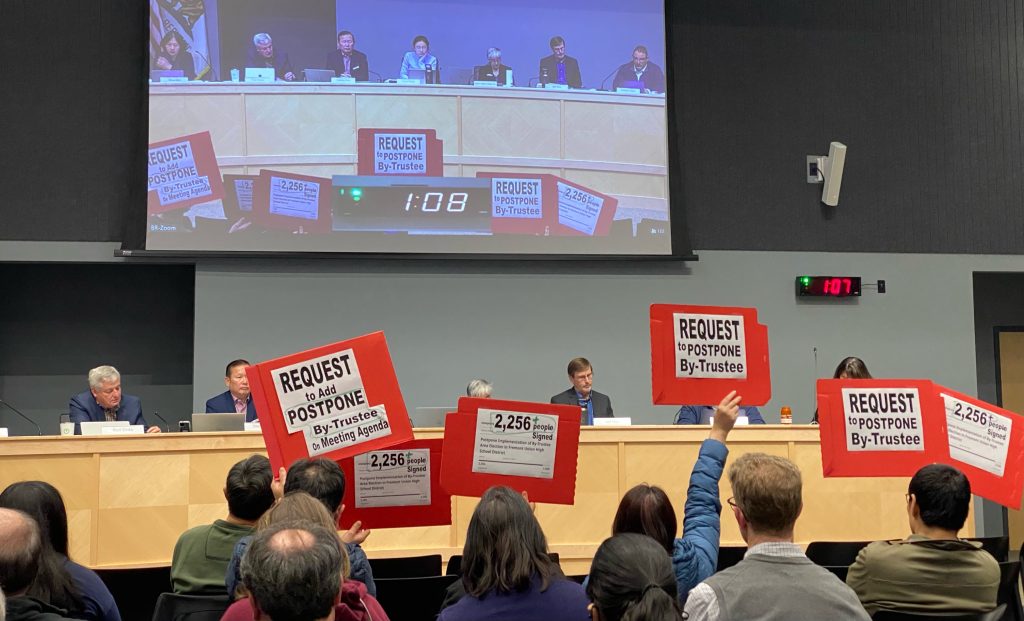On March 27, 2024 outgoing County Supervisor Simitian hosted his ninth and last Lehigh Southwest Cement Plant and Permanente Quarry Public Meeting at Cupertino Community Hall. The forum provided current status, future plans, and anticipated impacts to residents. The following story expands upon information from the meeting.
Meeting Draws Regional Interest with Diverse Panel
Officials from a number of cities were present including Cupertino’s Mayor Mohan, Councilmember Moore and Councilmember Wei. Also in attendance were representatives from Los Altos, Los Altos Hills, Los Gatos, Mountain View, Saratoga, Sunnyvale, Senator Cortese, Senator Becker, Congressman Khanna (via Zoom), FUHSD, and Foothill / De Anza Board Member Ahrens.
The panel included representatives from the San Francisco Regional Water Quality Management District, Valley Water, Bay Area Air Quality Management District, and various Santa Clara County personnel from Planning, Counsel, and Department of Environmental Health.
Quarry Expansion Withdrawn
Supervisor Simitian reminded attendees that in 2019, Lehigh applied for a major expansion of the Permanente Quarry that would “chop the top” off of the ridgeline between the Quarry and Rancho San Antonio. The ridgeline is protected by the 1972 Ridgeline Protection Easement Deed. In 2021, the Midpeninsula Regional Open Space District and the Board of Supervisors agreed to share enforcement of the deed, intended to protect the crumbling ridgeline. The quarry expansion proposal was subsequently withdrawn.
In December 2023, Lehigh submitted a new Reclamation Plan application to repair the quarry land for other beneficial uses. However, the County deemed Lehigh’s 2023 application incomplete. Amongst many needed clarifications, the application was insufficient in addressing an interim need to stabilize the over-mined ridgeline between the quarry and Rancho San Antonio. Now it is up to Lehigh and its parent company, Heidelberg Materials, to respond to the County’s requests for clarification.
Cement Kiln Closed
In 2023, Supervisor Simitian brokered a deal with Lehigh to permanently shut down the cement kiln. As part of that effort, the County Counsel surveyed Lehigh’s egregious history of violations across numerous regulatory agencies. Lehigh intends to file an application to demolish structures relating to the cement kiln this year.
To note: the cement kiln has been shut down since 2020 following multiple polluting industrial incidents. However, Lehigh continues to vehemently protect its right to manufacture cement.
Truck Traffic
Supervisor Simitian paused his discussion with County Planner Salisbury to repeat that reclamation is expected to take 40 years. Additionally, the quarry would be filled with imported “clean fill” at a rate of 600 trucks per day over 30 years, rather than using materials onsite. Supervisor Simitian concluded that this would be “a lively debate for the next Board of Supervisors.”
The source of quarry truck traffic on Foothill Expressway is operations for both Lehigh’s new aggregate plant and existing Stevens Creek Quarry. The source of cement truck traffic is the company’s new business of distributing cement manufactured elsewhere.
Other Panel Highlights:
- Lehigh is required to reclaim the land toward a secondary beneficial use and to post a bond to ensure the work is completed, under SMARA (Surface Mining and Reclamation Act), a State Law. County Planner Salisbury lamented that the Financial Assurance Cost Estimate (FACE) of $67M is unlikely to cover the reclamation expenses.
- Land heavily used for a variety of industrial uses such as cement, aluminum, metals, fertilizer, plaster made with asbestos, and incendiary bombs might fall under the jurisdiction of the County Department of Environmental Health.
- The Permanente Creek Restoration Area permitting timeline is underway to resolve a 2015 consent decree with the Sierra Club.
- Lehigh must restore a PG&E service road that it widened illegally (some of the grading occurred in Cupertino).
- Supervisor Simitian clarified for audience members that Lehigh receives money for selling aggregate. It would receive money for “importing” clean fill and for scrapping structures and equipment. In 2019, Lehigh’s proposal to turn the quarry into a for-profit landfill also drew criticism from the Open Space District and neighboring cities.
- Other questions included Valley Water’s rejection of turning the quarry pit into a water reservoir, future uses of Union Pacific’s rail spur, groundwater quality, and the decision of the County not to purchase the property.
The future of Lehigh’s 3,500 acres of land remains uncertain, as Lehigh could still apply for uses that are not allowed under current zoning rules. Cupertino Facts will provide more information as it becomes available.
Additional Resources:
Link to Meeting Recording on YouTube:
https://www.youtube.com/watch?v=wO47PK-CYwA
Link to County Lehigh Documents
https://plandev.sccgov.org/policies-programs/smara/permanente#3925188384-320845100
Link to Permanente Creek Restoration Plans
https://plandev.sccgov.org/permanente-creek-restoration-plan-draft-supplemental-eir
Link to Meeting Recording on YouTube:
https://www.youtube.com/watch?v=wO47PK-CYwA
Link to County Lehigh Documents
https://plandev.sccgov.org/policies-programs/smara/permanente#3925188384-320845100
Link to Permanente Creek Restoration Plans
https://plandev.sccgov.org/permanente-creek-restoration-plan-draft-supplemental-eir








